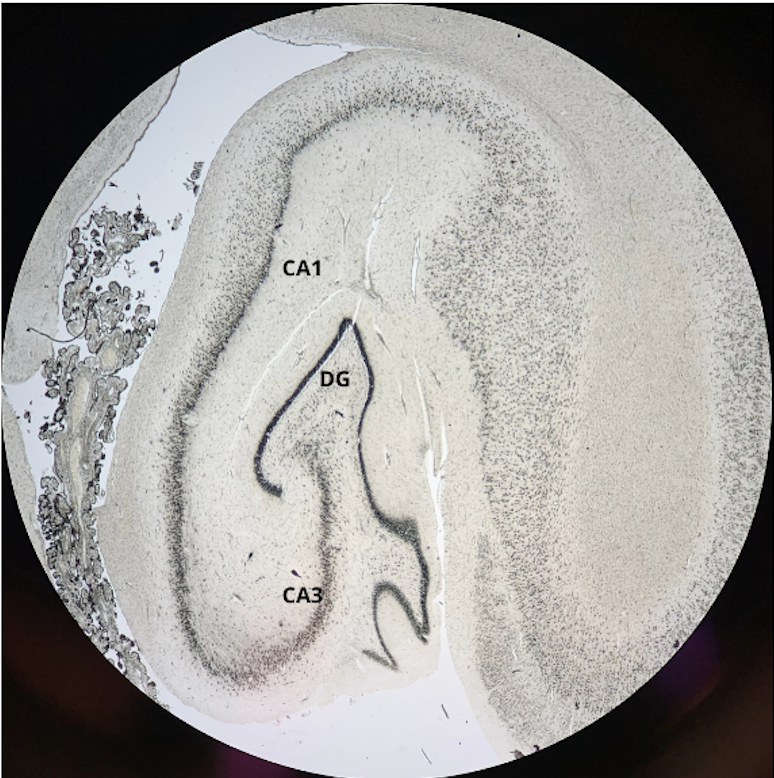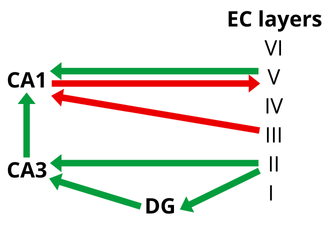A patient named H.M (1926-2008) lost a lot of his memory after a lesion in the temporal lobe of his hippocampus, as treatment for his epilepsy . This patient was part of a lot of studies about the function of the hippocampus in humans afther this moment. It was the beginning of many more data about episodic memory, spatial learning, and contextual fear in relation to the hippocampus.

Coronal section of Orang-Oetan hippocampus
BrainsofthisWorld lab at SciencePark
Anatomically, the hippocampus in humans consist of a tri-synaptic loop. Information from the cortex arrives from the entorhinal cortex (EC) and goes further through; the dentate gyrus (DG), the CA3 and the CA1 subfields. There is a lot of complexity between these regions. In general, the DG region consists mostly out of granule cells and the CA regions out of pyramidal cells. Read further for more detail!
The DG consists of three layers. The molecular-, granule- and polymorphic cell layer. The molecular layer consists mainly out of fibers from the EC and dendrites of dentate granule cells. The granule cell layer consists of densely packed granule cells. The third layer, the polymorphic layer, consists mostly out of mossy cells.
Excitatory granule cells originate in the granular layer and spread out into the molecular layer. Inhibitory basket cells originate at the border of the granule cell layer and the polymorphic layer.
The CA3 region receives mossy fibers from the DG and sends axons to the CA1 pyramidal cells, so called Scaffer collaterals. The internal connectivity in the CA3 is richer than in other hippocampal regions. The CA3 region is important for the encoding for spatial information in short term memory, episodic memory and social recall memory.
Pyramidal cells of the CA1 send their information via neurons to the subiculum and to deep layers of the EC. The CA1 receives information via scaffer collateral pyramidal cells from the CA3. The CA1 plays a role in matching and mismatching information which is obtained in CA3.
There are two pathways visible in red and green.
The tri-synaptic pathway is the information from layer II of the EC to the DG and via CA3 and CA1 back to EC. The red arrows are the monosynaptic pathway. In the monosynaptic pathway information travels via layer III of the EC to CA1 and back to the layer V of the EC. The monosynaptic pathway is essential for spatial learning. The tri-synaptic pathway is essential for rapid contextual learning (Nakashiba et al., 2008).

Hinke Boer, Fons Brauers, Andy Louter, Lindsey Pennaertz, Aisha Raja and Tonny Mulder - University of Amsterdam